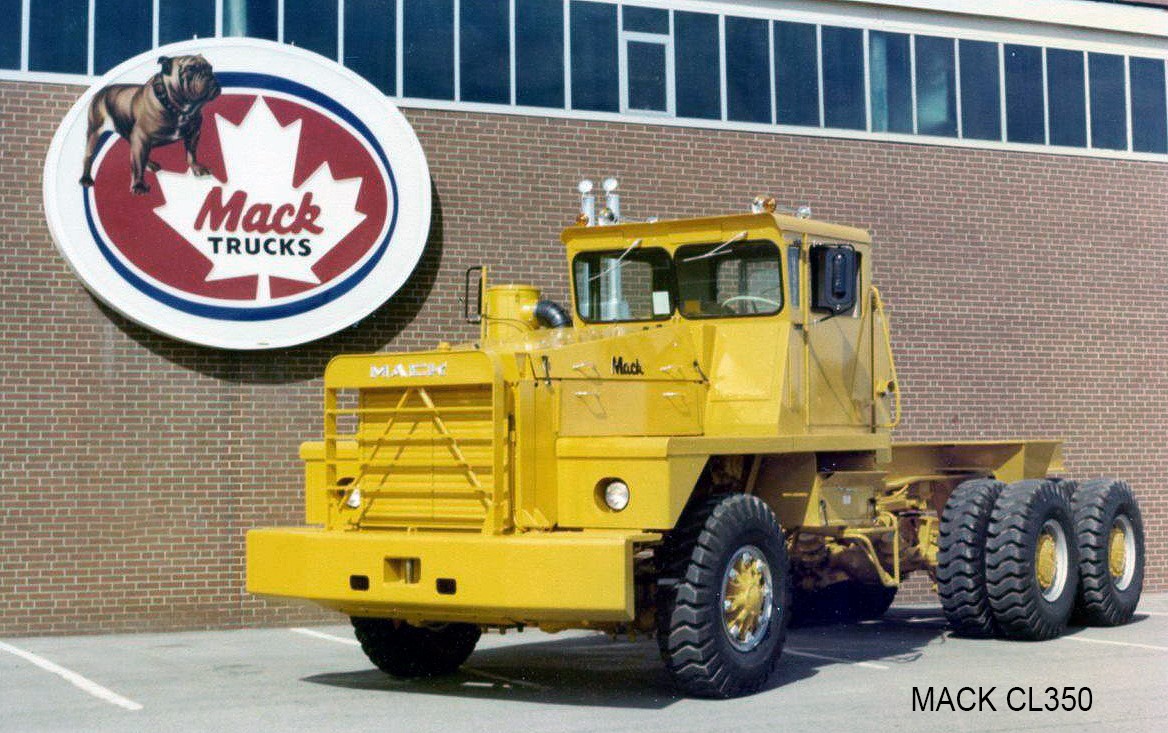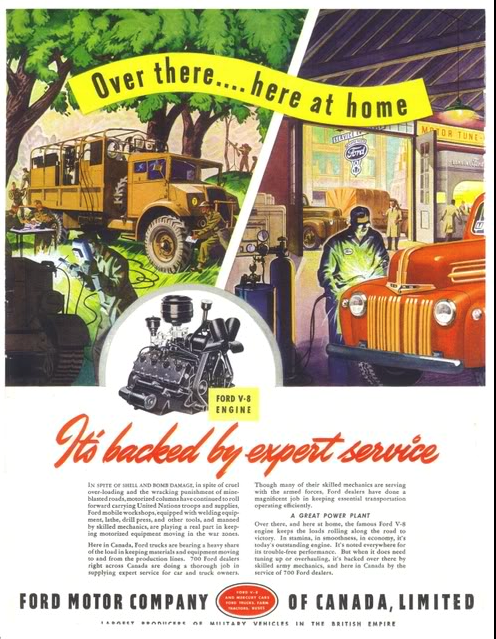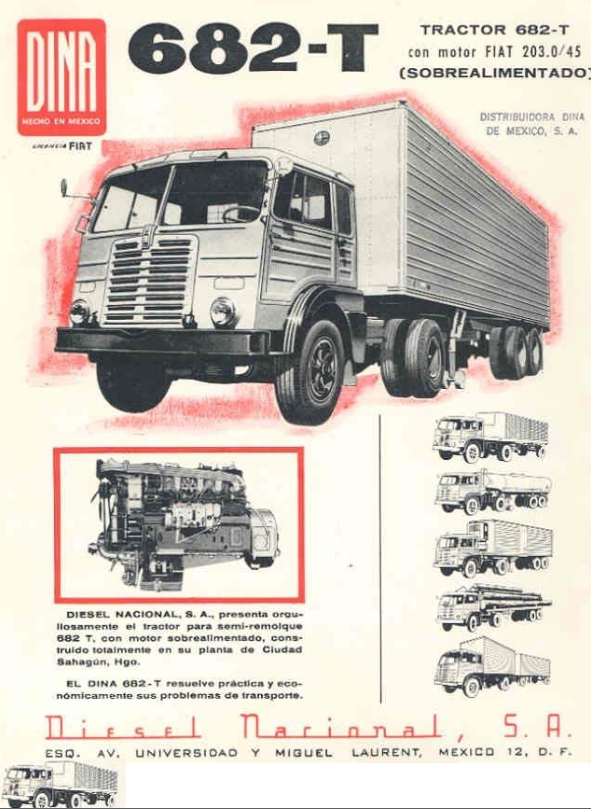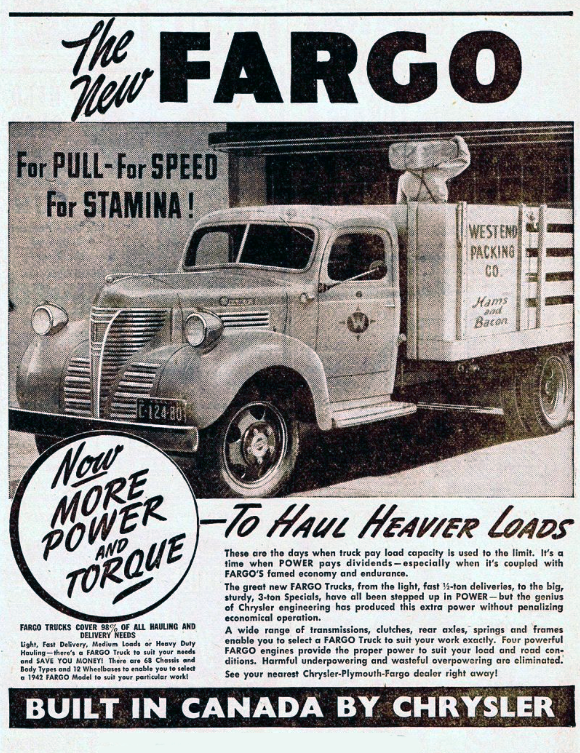With all the talk about cross-border trade, it’s a good time to remember that American truck manufacturers have been building trucks outside the U.S. for decades. Some of these operations served only their home markets, while others sent trucks back to the U.S., making this kind of shared production a long-running part of North American trucking history.
Canadian Production: Built for the Home Market (and Sometimes Beyond)
General Motors Canada (Oshawa, Ontario)
GM started building Chevrolet and GMC trucks in Canada in 1918, and by the 1930s, the Oshawa plant was producing a full range of models. During World War II, GM Canada played a critical role in manufacturing over 201,000 Canadian Military Pattern (CMP) trucks, including the Chevrolet C15 and C60, for Allied forces. After the war, Oshawa built domestic versions of U.S. models like the Advance Design (1947–1955) and Task Force (1955–1959) series, keeping local truck buyers supplied with North American-made trucks.
Ford Canada (Oakville, Ontario & Walkerville, Ontario)
Ford established operations in Canada in 1904, initially in Walkerville, Ontario (later Windsor), before shifting truck production to Oakville in 1953. By the late 1940s, Ford was producing both Ford- and Mercury-branded trucks—mechanically identical, but with unique badging for the Mercury line, which was sold through Lincoln-Mercury dealers. Models like the Mercury M-47 (1948–1950) and M-68 (1951–1952) mirrored Ford’s F-Series but were exclusive to Canada. Mercury trucks were phased out after 1968 as dealer networks consolidated.
Dodge Canada (Windsor, Ontario)
Chrysler Canada, based in Windsor, produced Dodge trucks while also manufacturing the Fargo brand—sold exclusively in Canada and select export markets. Fargo trucks, mechanically identical to Dodge models, included Canadian versions of the B-Series (1948–1953), C-Series (1954–1956), and later D-Series (1961–1972). The Fargo name was dropped in Canada after 1972, though it remained in use elsewhere.
White Trucks (Montreal, Quebec & Woodstock, Ontario)
White Motor Company assembled trucks in Canada for industries like logging, mining, and long-haul freight. Montreal and later Woodstock, Ontario, produced models like the White 3000, which saw widespread use in heavy-duty applications. White remained a recognizable name in Canada until the brand was absorbed by Volvo in the 1980s.
Mack Trucks (Oakville, Ontario)
Mack established a Canadian plant in Oakville in the early 1960s, assembling select models for domestic buyers. The B-Series was built there until 1966, followed by the R-Series, which remained a staple in construction and highway freight. The CL350, a heavy-duty model built in limited numbers from 1976 to 1979, was designed for logging and heavy construction, featuring powerful Detroit Diesel engines and Mack’s planetary axles. While Oakville’s production was smaller than Mack’s U.S. operations, it ensured that Canadian buyers had access to locally assembled trucks suited for demanding jobs.
Mexico’s Role in Truck Manufacturing: Building for the Americas
Kenworth Mexicana (Mexicali, Baja California, est. 1959)
Kenworth was one of the first U.S. truck manufacturers to set up large-scale production in Mexico. The Mexicali plant, established in 1959, originally served the Mexican and Latin American markets but eventually exported models to the U.S. By the 1970s, Mexicali was building versions of the Kenworth W900 for both local and export customers. The plant remains a key part of Kenworth’s global production today.
DINA (Diesel Nacional, est. 1951 – in partnership with International Harvester)
DINA, a Mexican manufacturer, produced trucks under license from International Harvester starting in 1951. Throughout the 1960s and 1970s, DINA assembled IH Loadstar and Fleetstar models, with some units exported to the U.S. under the International Harvester name. Though DINA later shifted to buses and heavy-duty trucks, its early connection to IH kept it tied to American trucking history.
International Harvester (Escobedo, Nuevo León)
Navistar’s Escobedo plant, opened in 1998, became a major producer of Class 8 trucks for the U.S. and international markets. While this was post-1980, International had been assembling trucks in Mexico in smaller numbers for years before that, primarily for domestic use.
Dodge and General Motors
Before 1980, Dodge and GM operated in Mexico primarily to supply the local market. Some GMC and Chevrolet medium-duty trucks were assembled in Mexico for Latin America, but large-scale exports to the U.S. didn’t take off until later.
Mack Trucks
Mack had a small presence in Mexico before 1980, but most production served local markets rather than being exported. Some Mack R-Series models were assembled in Mexico, primarily for Latin America.
Why It Mattered
Before free trade agreements changed the landscape, American truck makers built in Canada and Mexico for practical reasons—tariffs, local demand, and, in some cases, wartime necessity. That’s how uniquely Canadian models like Fargo and Mercury came to be, and why trucks like the Kenworth W900 started rolling out of Mexicali. Some of these plants kept their production within their borders, while others shipped trucks back into the U.S. and beyond. Either way, the trucking industry has never been just a one-country operation—it’s always been a North American story.



